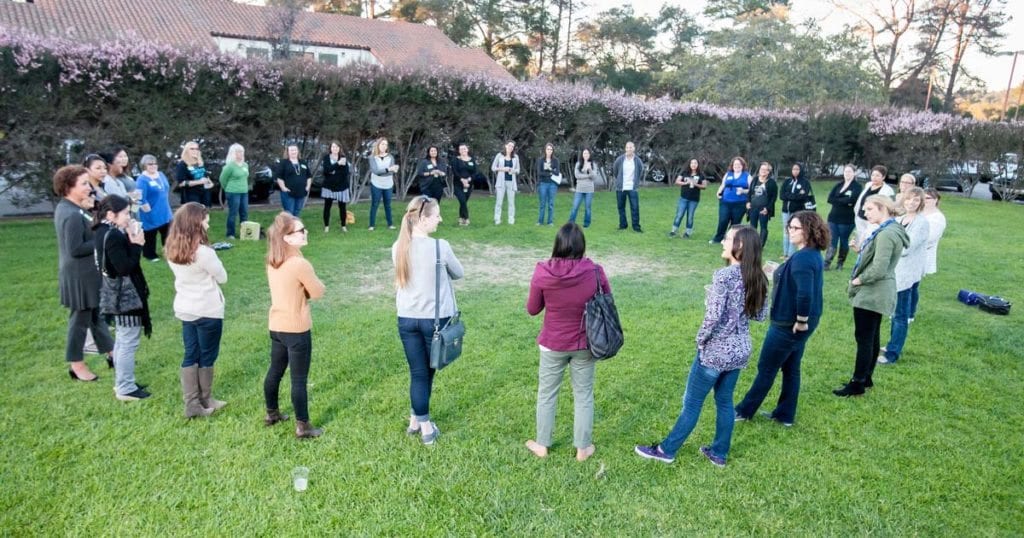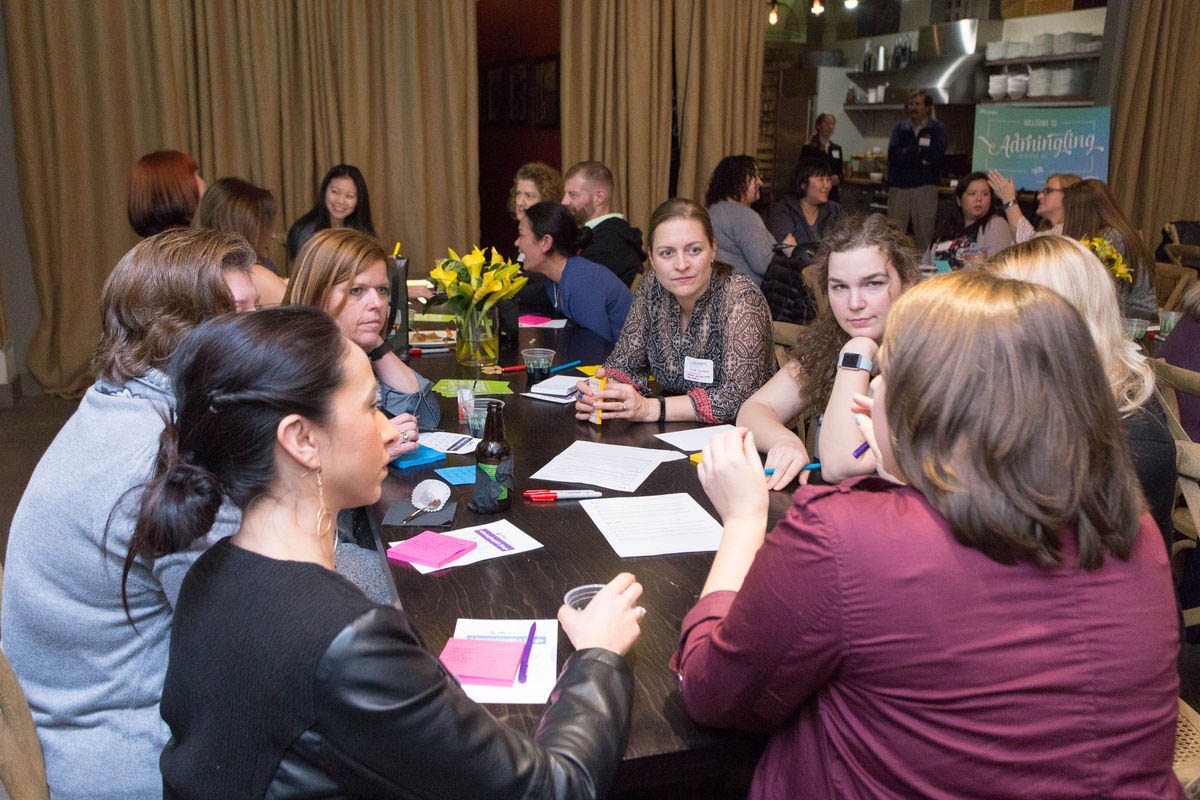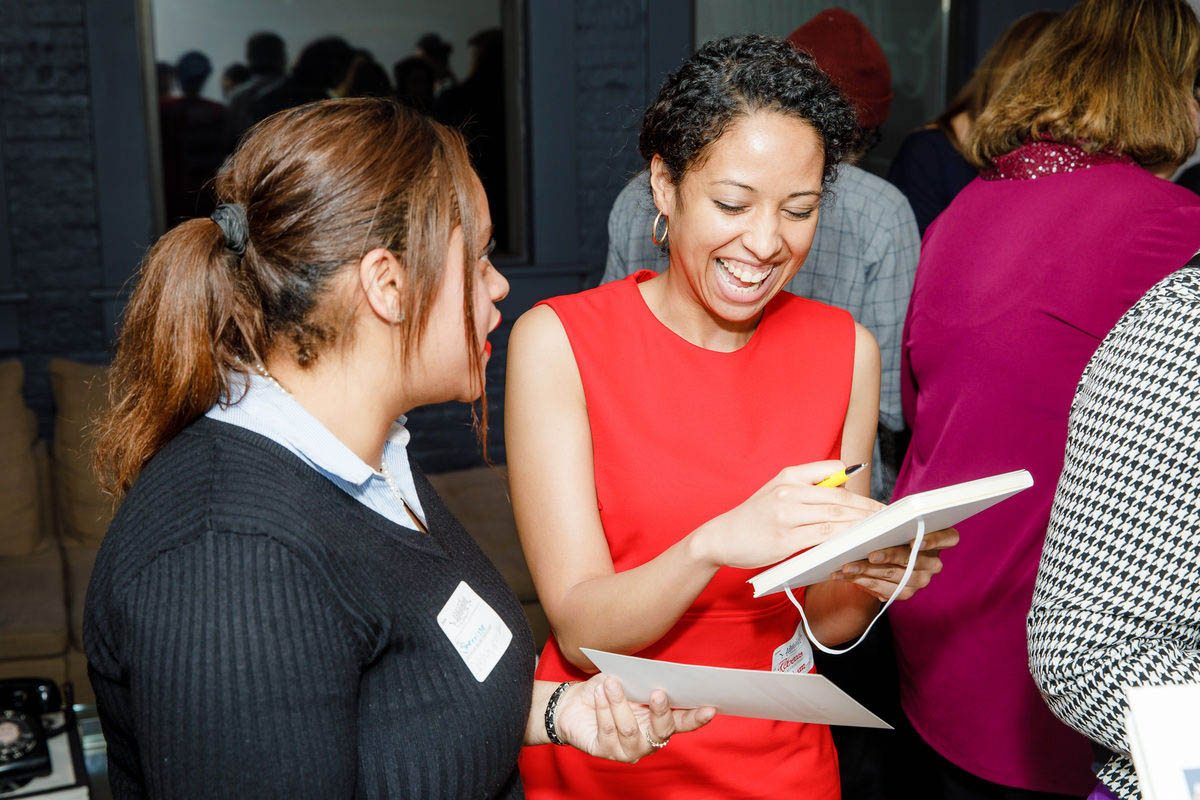Team Building: Why It’s Still Important & How to Make It Interesting

Flappers, Prohibition, Speakeasies, the New Deal—all of these are synonymous with the Roaring ’20s and the subsequent Great Depression in the ’30s. But there’s one product from the period that doesn’t get nearly as much recognition—the emergence of teams. That’s right; the origins of the team can be traced back to the late ’20s with The Hawthorne Studies, which documented what happened to a group of workers in various scenarios.
The study’s conclusion?
Worker interaction was the most significant factor in building a sense of group identity, social support, and cohesion.
That right there is team building, Ninjas! Team-building activities have the specific end goal of developing group functions and fostering collaboration among individuals. It’s key to smooth operations and an essential aspect of remedying a fragmented workforce.
Who Needs Team Building Anyway?
Since it’s been scientifically proven to not only bolster teamwork but also enhance team performance overall, it’s safe to say that every office could use some team building. In the case of Ninjas carrying the weight of culture or employee growth on their shoulders, it’s even more important. Happiness and learning are closely related, which impacts culture and productivity more than free snacks or Ping-Pong tables.
Emphasizing teamwork creates better, happier teams—sounds like a no-brainer, right? You’d be surprised. In professional environments that don’t dedicate time to forming cohesive teams, mistakes arise more often than individual error.
Medical settings are a great example. Your Ninja duties may not require CPR, but your company could still function like a buzzing emergency room—full of professionals who each have a specific job. Yet, each of these roles are dependent on the others. So when breakdowns in communication and teamwork occur, the effect is huge—it’s attributed to 70 percent of adverse events in medical settings.
Bottom line: the effectiveness of the team greatly impacts the well-being of everyone.
Teamwork Versus Team Performance: Dawn of Productivity

Team-building activities are useful for both new and intact teams, though the results differ based on two distinct entities.
Teamwork
Research showed that team-building activities were useful for fostering greater teamwork among newly formed teams, but the effects on an existing team were less pronounced. Why’s that?
- New teams are more malleable and have greater room for improvement among processes than established teams.
- Individuals in a new team have to put aside some personal aspirations and fully embrace their membership in a group.
“You can do less of your own thing in a bigger team, but you can achieve so much more [together]…” – Benjamin Voyer, marketing and psychology professor
Team Performance
On the other hand, the same research showed existing teams benefitted more in terms of performance after executing team-building activities. These groups were better able to translate exercises into performance-based gains than new teams that benefitted from just establishing cohesive strategies in the first place.
- A team that’s already figured out how to work together is way more susceptible to improving team performance because they’ve already got teamwork locked down.
- Dr. Carl Robinson, a business psychologist and executive coach, says that in regards to high performing teams, individuals “offer their opinions, challenge each other, hold each other accountable, and, most importantly, praise each other.”
Voila—your recipe for improving team performance.
Understanding the Building Blocks of a Good Team
Psychologists Albert Carron and Kevin Spink developed a conceptual model for team building that includes three distinct parts:
-
Inputs
Let’s get introspective! Inputs relate to the structure and environment and what each individual can contribute to them. Individuals must understand their role, distinct skills and position, norms governing the team, and acknowledge leadership responsibilities. Basically, you’ve got to know yourself to know your team.
-
Throughputs
This involves every individual fully understanding their inputs and applying that knowledge to the overall process of working together as a unit. This may prompt individual sacrifices for the overall team to meet its goals. But as Benjamin Voyer said, that’s the psychology behind true teamwork.
-
Outputs
Finally, we get to the goodies! Operating cohesively as a team using throughputs creates outputs. These are outcomes of successful teamwork—think high performance, cohesion, efficacy, and overall satisfaction.
Team-Building Activities That Work, Work, Work, Work, Work

Now that you know what team building is, how to make a good team, and why all of this jazz is so important, it’s time to get to work putting some ideas of your own to practice.
-
Presentations & Group Discussions
This sounds boring and obvious, but these are extremely simple methods for making sure every person knows their defined role and place within the team. Capitalizing on conversation can also help individuals understand how they matter when it comes to helping the team achieve goals.
Sound familiar? It should—those are inputs from the team-building model above! Presentations can help define a project and its goals while a group discussion fosters teamwork by giving every person the chance to express their opinions.
A fun idea for a group discussion is to turn it into a show-and-tell exercise. This can be done on the team level or for an entire department, where a set number of people present during lunch. No pressure though—keep the floor open for hobby overviews or how-tos based on a person’s interests. If your company would prefer to keep things centered around work, employees can take turns sharing one thing they learned from the last project, which will help boost performance on the next one.
-
Simulation Trainings
Setting up mock exercises can illustrate how you work as a team to fine-tune how you gel when it comes to the real thing. Challenges and team-based competitions are all great learning exercises to better understand internal strengths and weaknesses. Plus, they’re fun.
For a team that relies on hands-on collaboration, a simulation like Wacky Races—where you design and build a race kart pretty much from scratch—can be a stress-free, exciting way to get a team’s skills in gear.
-
Employee Feedback & Review-Type Activities
It may not be as sexy as other activities, but it’s still a great method of creating an open, welcoming environment for employees to express opinions and feel like they’re contributing. As you know, that’s crucial.
A standard idea is an employee feedback survey, but that’s pretty dry (and also extra work—yuck!). Instead, try something like a suggestion jar. Invite employees to comment on what they think is going smoothly and where there’s room for improvement. Then, gather around and go through the tips so everyone feels validated and heard.
-
Outside Workshops
Heading out of the office adds great value to teamwork and performance. Workshops designed to get people working together beyond a conference room place the team in a fun, unusual setting where they must depend on each other.
Escape rooms have become pretty popular for this reason. These establish a common shared experience and help team members understand how to play to their strengths in the office. Take inspiration from your school days, too. Organize an office Field Day or office Olympics to get people working together in a more light-hearted manner.
-
Celebrate Good Times, Come On!
Acknowledging each other’s successes and showing appreciation for that is a great boost for individuals and the overall team. Try doling out superlatives or putting on an awards ceremony after a project’s complete. After all, who doesn’t like going home with a little gold?
Activities like these will keep everyone feeling motivated to continue doing good work. Any jolts of positivity you can add to the proceedings also help combat work stress and keep a team united around a common goal.
Play a game like Catch Phrase before you get started on your daily grind. It’s a perfect warm-up that forces you to communicate effectively and get to know your team members.
The Benefits of Effective Team Building

Don’t worry—all of that hard work and team building won’t be for nothing. Not only do team-building activities catalyze greater teamwork initiatives, they end up reaping huge benefits in overall team performance by:
- Defining team goals and objectives
- Improving worker productivity
- Increasing team motivation
- Fostering group problem-solving
- Encouraging creativity and out-of-the-box thinking
- Boosting team morale and leadership
- Identifying strengths and weaknesses of a team
- Revamping processes and procedures to yield greater results
- Tapping into hidden potential of team members
Team Building Complete
Your team has absolutely nothing to lose by engaging in team-building activities. At the very least, putting some of these ideas into practice will get your team working closer and may help you bond more than you already have.
The best part is that you can reap all of those positive benefits with team-building activities that don’t skimp out on the fun. Of course, anything you try should be relevant and meaningful—but that doesn’t mean your crew can’t have a rootin’-tootin’ good time.
Alright, Ninjas, now we want to hear from you! Have you introduced any team-building initiatives that were a major success? Share details in the comments!
Hi there Office Ninjas! Great detailed article, thank you for that. Learned some tricks on team building, will try to use it in my team.
I love this! It is so easy to get wrapped up in the day to day job responsibilities. This article was a great reminder for me to promote more fun and team building within my firm! Thanks!
There are some great ideas here. The best team building activities really depend on what you’re trying to accomplish, how much time you have and where your team members are located.
Bad team building experiences can be worse than none at all and you want to be sure to include the entire team if possible.
Keeping it relevant to work is important too. Some employees appreciate purely social activities, but most see them as a waste of time or even hate them.
It really is important for leaders and bosses to understand the importance of proper team building. I love that your article goes over so many of the major benefits such as fostering group problem-solving. After all, those kinds of skills are always in high demand when it comes to most offices.
A great ice breaker for groups who may not know each other well yet. Have a 5 min discussion with someone you don’t know and then you go around the room and everyone takes a turn to introduce the person they were just speaking to. When we did this we learnt a few fun facts about the people we thought we knew.
Hey awesome Office Ninjas, we have a fun one we’d love to share! It’s called Arctic Adventure.
When it comes to team building activities, this one is a bit complex, but lots of fun, and it helps workers with collaboration and creative problem solving. You’ll need some construction materials, so just take what you think you might need out of your office or cubicle – paper, card stock, rubber bands, paper clips, post-it notes, etc. You’ll also need an electric fan.
Your people are going to be split up into equal teams and pretend that they are not office workers. Instead, they are fearless explorers navigating the Arctic wilderness. Have each team choose a leader. Now, the problem is that the leader has frostbite and is not able to use his or her hands, and the rest of the team is snow blind and cannot see. Give each group their construction materials, start a timer, and tell them to build a shelter. They have two choices – either work together or tell you to go screw yourself and go grumbling back to their cubicles and freeze to death. Once all the shelters are built, turn the fan on. The team whose shelter stays standing the longest wins, and each and every member of that team gets an ice cream Eskimo! WuHuu! :)
That sounds like a blast, Sherri! Thanks so much for sharing—we’ll have to put that in our team building arsenal.